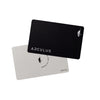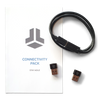
Recently, the term "cryptocurrency" has been acquiring popularity and is difficult to overlook buzzword. Like digital money, it is encrypted and incorporates a number of security mechanisms meant to regulate its generation and dissemination. Children should learn to grasp cryptocurrency as it keeps becoming more and more popular.
In this article, we’ll walk you through how to introduce your child to cryptocurrency and help them set up a crypto wallet. Sound interesting? Let’s start with the basics.
Cryptocurrency 101
What Exactly is Cryptocurrency?
Cryptocurrency is a type of digital money, but it’s not the kind you can hold in your hand. There are no physical coins or notes; everything exists online.
More importantly, neither any government nor central power controls it. Rather, cryptocurrencies are distributed such that no one entity is in charge. It runs on blockchain technology, akin to a digital ledger kept on several computers that logs every transaction.
The security of cryptocurrencies is among their strongest qualities. Every transaction is recorded on the blockchain, hence it is quite difficult to replicate or manipulate. It is also private; you are not required to supply personal information while using it.
How Does Cryptocurrency Work?
Blockchain technologies drive cryptocurrencies. Picture a computer network where every device has a copy of the blockchain. These computers cooperate to validate a transaction's validity when it is made. The transaction appears as a fresh block on the blockchain after they authorize it.
The clever bit is that every block has a hash—a unique code—that acts as its ID. This hash builds a chain by include the hash of the last block as well. Any prospective offender would have to change the whole chain if they tried to tamper with one block, which is a difficult chore.
Why is Cryptocurrency a Big Deal Today?
In modern economics, cryptocurrencies have grown to be really important. It might completely change our handling of money. Comparatively to conventional approaches, transactions could speed up, becoming less expensive, and become more safe. People as well as companies are starting to use cryptocurrencies as payment.
Furthermore, cryptocurrencies are global citizens not bound to one nation. You can thus utilize it for foreign transactions without having to deal with foreign exchange. It also is more versatile as it runs outside conventional financial guidelines. It also is a dependable choice for safe transactions since it is quite difficult to replicate.
Introducing Your Child to Cryptocurrency
Thinking about teaching your child about cryptocurrency? Great idea! It’s like giving them a head start in understanding digital money and why it’s important to know how money works in today’s world.
Making It Understandable
Talking about cryptocurrencies with your child should be straightforward and understandable. Younger children could understand it as digital coins they could use to purchase tokens from an arcade online. Older kids might appreciate a bit more detail, such as how blockchain technology keeps everything secure and decentralised.
Learning Through Fun
Making learning about cryptocurrencies entertaining for your child would help them to participate better in it. Investing a small sum in cryptocurrencies will introduce kids to the idea and let you design a treasure hunt using pretend digital coins, so transforming the financial journey. You could also let them explore “mining” cryptocurrency through online games, blending learning with entertainment.
Encouraging Questions
Your youngster should be encouraged to ask questions since it is normal. Be ready to respond to their questions and clarify the hazards as well, including how drastically the value of cryptocurrencies might change. You might also teach them market trend monitoring techniques. They will learn more the more inquiries they probe.
Setting Up a Crypto Wallet for Your Child
Parents might think about creating a crypto wallet for their kids since cryptocurrencies are getting increasingly popular. A cryptocurrency wallet is a safe place to keep digital money, much as a digital piggy bank. Helping them create one will be leading them on their financial path.
Choosing the Right Wallet
You initially have to decide on the appropriate kind of wallet. Software wallets—apps you might download on your phone or computer—are user-friendly but might be hacked easily. Hardware wallets, which are actual devices providing extra protection but sometimes more difficult to use, follow then.
Think next on the kinds of cryptocurrencies you wish the wallet to carry. While some wallets may contain a range, others just support particular cryptocurrencies.
Creating the Wallet Address
The next step is setting up the wallet address. This is digital equivalent of the home address of your wallet. Get it from a reputable source and keep it safe.
Wallet addresses are case-sensitive, hence before transferring or receiving any bitcoin, be sure everything is carefully checked. Certain wallets even let you create several addresses, therefore providing still another degree of versatility.
Securing the Wallet with a Strong Password
Finally, secure the wallet with a strong password. Surely you would not want just anyone to have access? Your first barrier of protection is a strong password; it should be at least 12 characters long and combine symbols, digits, uppercase and lowercase letters. Steer clear of utilizing basic language since hackers can readily get through them. For more security, think about also allowing two-factor authentication.
Not only are you saving digital money by creating a crypto wallet for your youngster, but you also are imparting important security and responsibility teachings.
Teaching Wallet Safety
Now that the wallet is set up, it’s time to teach your child about keeping it safe. Let’s cover private keys, backup phrases, and how to avoid scams.
Private Keys: Your Most Important Asset
Private keys are like VIP passes for your crypto wallet—they’re the keys that allow access to the wallet’s funds. Make sure your child understands how crucial these keys are. Losing them could mean losing access to their wallet entirely.
Backup Phrases: The Ultimate Safety Net
Backup phrases are basically a safety net should something go wrong. Instruct your youngster to keep these lines in a safe place—such as a locked box or a secret diary. Ignoring these could cause lifelong wallet access to be lost.
Spotting Scams
Finally, it’s essential to educate your child about the dangers of scams. Explain how phishing scams work, where fraudsters pretend to be legitimate services to steal information. Warn them about fake wallets that promise benefits but ultimately lead to trouble. Helping your child recognise these threats will keep their cryptocurrency safe.
Conclusion: Raising a Savvy Crypto Explorer
All told, teaching your child about cryptocurrencies is like handing them a key to an other planet. You are preparing children to be financially smart in the digital age by dissecting difficult ideas, making learning enjoyable, and making sure they get the need of protection. Recall that information is power; with your direction, your child will be well on their path to becoming a competent crypto explorer.



















































